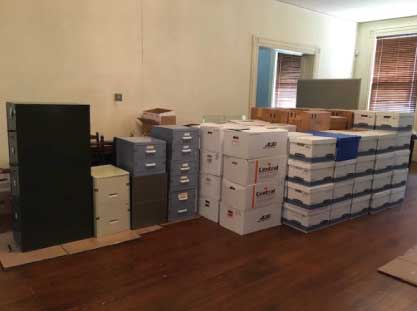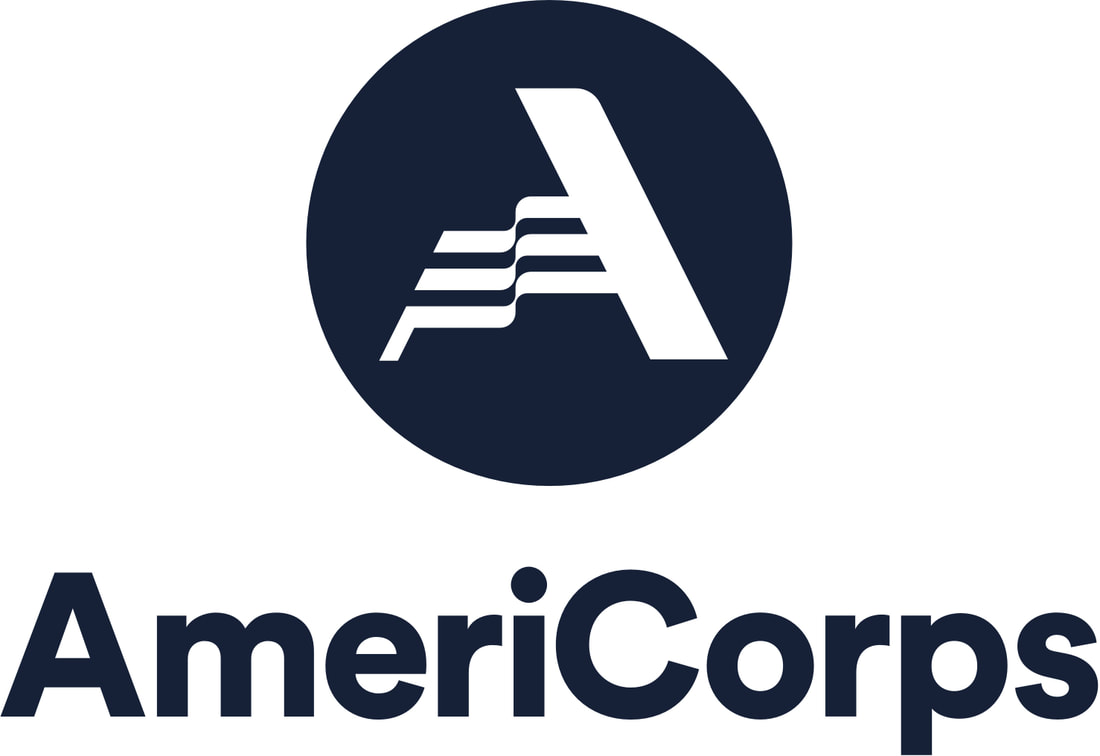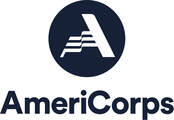|
By Edward Pride, Preserve WV AmeriCorps at the Waldomore (Clarksburg – Harrison County Public Library) Since April 2016, extensive renovations have been ongoing at Waldomore, a historic library and museum located in Clarksburg, WV. Improvements being performed during the restoration include the replacement of aging electrical wiring with a new system, the repairing of damaged plaster throughout the structure, as well as the installation of new carpeting and paint. Due to the nature and scale of the project, the contents of the building had to be removed and placed in temporary accommodations. Before Waldomore Staff could begin the moving process, extensive planning had to take place in order for the move to be executed with little to no issue. Although every collections move has different characteristics and challenges, the items covered below provide a basic framework for any museum or archives to use when planning their move.
After determining the size and condition of the collection, one should begin troubleshooting possible issues that may arise during the packing process and move. This may range from possible physical or structural limitations with your site to accommodate a move, monetary constraints, inclement weather, or unexpected setbacks. Through troubleshooting a move, a site will be better prepared to address issues as they arise as well as highlight possible challenges that will have to be considered. In regards to Waldomore, items covered during troubleshooting included possible issues with the use of a circa-1925 elevator as means to lower collections to the first floor, the condition of a disintegrating access ramp during the move, as well as weight limitations on the floors.
Once the collections evaluation and troubleshooting is completed, focus should shift to planning the timetable for both the packing and moving processes. It is important to set realistic benchmarks during both phases and not underestimate the length of time it will take to perform these tasks. Without set benchmarks, you will either find yourself hitting a deadline unprepared or taking far longer to perform a move that should have only taken a certain amount of time. When planning the timetable, allow for extra time to serve as a buffer when unexpected setbacks occur. If you are contracting a moving firm for the move, consult with them when making decisions in regards to the schedule. In the case of Waldomore, we originally estimated that the packing process and move would take six to eight months. Fortunately, we were able to move the building’s contents in seven months. The matter of setting up a budget for the packing of collections and move should require thorough consideration. Monetary constraints are a common part of museums and archives and committing to a move is a large undertaking. It may be tempting to find the cheapest option or cut corners when planning the finances of a move. However, when factoring in the safety and condition of your collections, it is crucial that appropriate resources are procured and allocated during each step of the process. It would be a tragedy if an artifact were to be damaged because funds were not allocated to purchase proper packing materials. If finances are a concern, there are possible ways to lower costs while maintaining standards, including research and price comparisons of material costs, purchasing resources in bulk, training volunteers to perform basic packing, and negotiating labor and handling expenses if contracting with a moving company. In regards to some projects, you may be fortunate enough to temporarily house your collections in another section of the building while restoration work is ongoing. However, if you are required to remove your contents, it is important to find appropriate off-site accommodations for the collection. When evaluating potential sites, remember to select a location that provides ideal conditions for your collections. This includes a space that is climate controlled with low and stable humidity, safely secured, and easily accessible for staff. If a candidate site does not meet one of these factors, move onto the next location. Assessing the labor needed to perform the packing and moving processes should also be considered during the planning phase. While some projects are small enough that you may be able to handle the task with available staff, it is more likely that extra assistance will be needed. If resources are available, it may prove beneficial to hire individuals with experience in packing and materials management. Also, recruiting graduate students in history, library and museum studies could provide additional support. While bringing in skilled persons is one avenue to examine, the most common pool of available labor for organizations to extract from is your volunteer program, interested locals, or even your board of trustees. With proper training and guidance, an organized team of volunteers will make all the difference during this process. Prior to the packing process, one should assess and purchase the supplies needed for the move. Depending on the size and state of the collection, certain materials will be needed. The most essential materials required for packing include both cotton and polyvinyl gloves for materials handling, acid-free tissue paper and newsprint to serve as buffer for fragile items as well as filling for boxes, archival folders and boxes for documents and media, foam or cardboard corner protectors for framed works, acid-free quilt batting or fiberfill for large or denser items, and quality packing tape. Although this is a basic list of supplies, please keep researching for new items that may come onto the market. During this time, you may find yourself wishing to be frugal in the purchasing and use of supplies, but if the use of a few extra sheets of tissue paper or newsprint is the difference between an intact or damaged artifact, than it is important to allocate proper resources. The process of packing and moving a collection is a long and arduous task. From beginning the planning process, to commencing of packing, and finally executing the move, the moving of your collections will require great patience, effort, and skill. Through taking the necessary steps in planning your move, you will save yourself from hours of toil and heartache. May your next collections move be successful and worry free! Comments are closed.
|
Preserve WV StoriesCategories
All
Archives
August 2023
|
Get Involved |
Programs |
Contact UsPreservation Alliance of West Virginia
421 Davis Avenue, #4 | Elkins, WV 26241 Email: [email protected] Phone: 304-345-6005 |
Organizational Partners:
© COPYRIGHT 2022 - PRESERVATION ALLIANCE OF WEST VIRGINIA. ALL RIGHTS RESERVED.



 RSS Feed
RSS Feed



